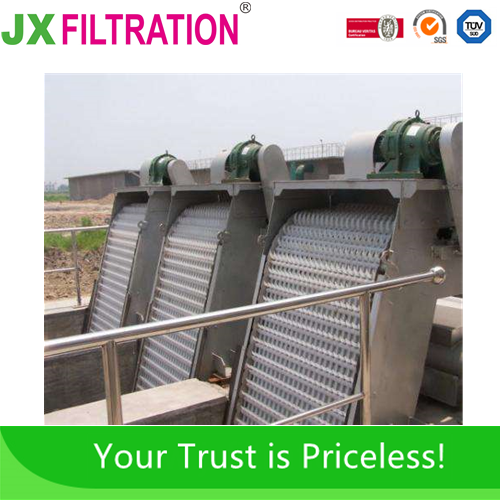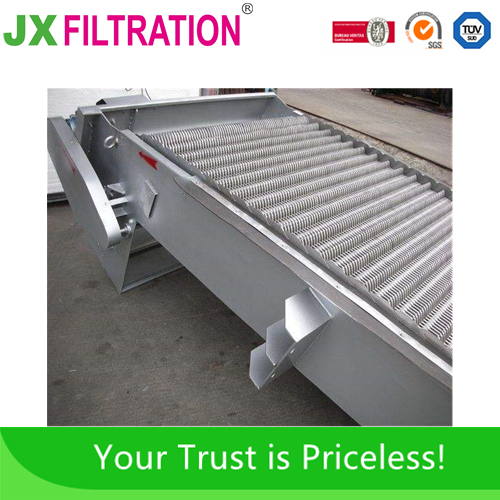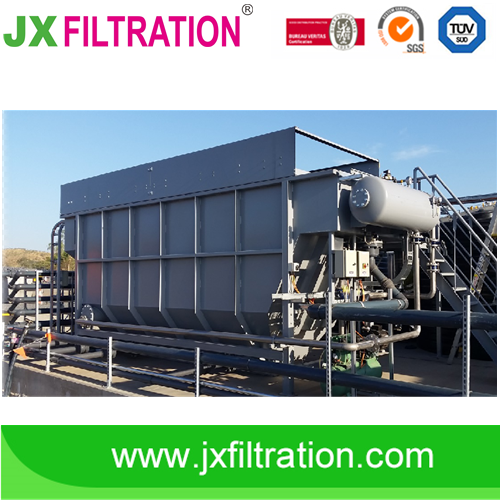Treatment Process of Food Processing Wastewater
The waste water passes through a mechanical bar screen (grill gap is 3 mm), which intercepts and removes particulate dirt in the waste water, separates suspended solids such as bread crumbs, fish skin, meat crumbs and fish bones.
Then the water enters the hydrolysis sedimentation tank. In the tank, the particles with a larger proportion of sediment in the wastewater can be quickly precipitated and separated, and then discharged into the sludge tank through the sludge gas lift pump.
The waste water enters the regulating reservoir, and the conditioning time is designed according to HRT = 8h. An aeration device is installed in the regulating reservoir. It has the functions of deodorizing, preventing anaerobic decomposition of sewage, defoaming, and accelerating the separation of oil in sewage. In the production process, sodium hypochlorite can also decompose and digest organic matter and reducing inorganic ions in water through hydrolysis, precipitation and regulating reservoir to ensure the subsequent biological treatment effect.
During operation of air flotation treatment device, the treatment capacity is 60t/h. The concentration of coagulant (polyaluminum chloride) was 20 ppm, and the concentration of coagulant (polyacrylamide) was added at 2 ppm.
The air flotation treatment device dissolves compressed air in water under a certain pressure, and when the pressure applied to the water is reduced to atmospheric pressure, the air is released in the form of small air bubbles. At the same time, the inorganic coagulant is added through pipeline metering and mixing.
With organic coagulants, the chemical solution and wastewater are fully and uniformly mixed, so that a series of physical and chemical changes occur, and fine flocculate are formed to collide and adhere, and then grow up during the phase polymerization process, and combine with microbubbles to form larger bubbles float on the surface of the liquid, so that the organic matter (such as oil, fish blood, coal slime, starch, etc.) and inorganic pollutants in the wastewater are combined.
Thereby separating the flocculate from the water and remove the water in the flocculate return flow, a part of the water flows into the biological contact oxidation tank, and the water and suspended solids are completely separated. The scum on the surface of the air flotation tank is collected by the slag scraper into the scum pipeline, flows into the sludge thickening tank, and is regularly pumped to the filter press chamber by a pneumatic diaphragm pump. The separated supernatant is returned to the biological contact oxidation tank.
Finally, using the plug-flow biological contact oxidation method, the first-stage waste gas enters the biological contact oxidation tank. Biochemical packing and variable microporous aerators are installed in the pond. The ratio of air to water is designed to be 20:1. The microbial film grown on the filler will adsorb and further decompose the organic pollutants (such as soluble oil, fish blood, slime, starch, etc.) in the sewage, and decompose and remove the pollutants in the water produced by the metabolism of microorganisms. Thereby purifying the water. The wastewater enters the secondary air flotation treatment device for further treatment.
Any requirements, contact us now!
Grace
Email:grace@filtrationchina.com
Mobile/Whatsapp/WeChat:+86 17269571160





